Objects : 132
-
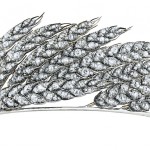 ObjectWheat-ear tiaraThis tiara was made around 1811 by François-Regnault Nitot, son of Marie-Etienne Nitot, jeweller of the Empire and founder of the house that would become Chaumet. Not only is it a masterpiece of craftsmanship, it also carries a symbolic dimension dear to Josephine and Napoleon.
ObjectWheat-ear tiaraThis tiara was made around 1811 by François-Regnault Nitot, son of Marie-Etienne Nitot, jeweller of the Empire and founder of the house that would become Chaumet. Not only is it a masterpiece of craftsmanship, it also carries a symbolic dimension dear to Josephine and Napoleon. -
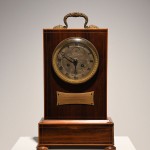 ObjectMantle Clock at Longwood marking the hour of the Emperor’s deathMartin Pigneret: mantle clock, circa 1815. This clock brought back from St Helena by General Bertrand still marks the hour of the Emperor’s death.
ObjectMantle Clock at Longwood marking the hour of the Emperor’s deathMartin Pigneret: mantle clock, circa 1815. This clock brought back from St Helena by General Bertrand still marks the hour of the Emperor’s death. -
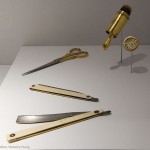 ObjectPair of scissors used to cut the Emperor’s hair after his death, and his razors and shaving brushAfter the Emperor died [at five forty-nine in the evening of 5 May], General Bertrand noted in his notebooks for 5 May 1821, “At ten in the evening Abbé Vignali said a few prayers, […] at half past eleven, the Emperor was shaved. Six hours…
ObjectPair of scissors used to cut the Emperor’s hair after his death, and his razors and shaving brushAfter the Emperor died [at five forty-nine in the evening of 5 May], General Bertrand noted in his notebooks for 5 May 1821, “At ten in the evening Abbé Vignali said a few prayers, […] at half past eleven, the Emperor was shaved. Six hours… -
 Object / St HelenaDeath Mask known as the “Bertrand Mask”
Object / St HelenaDeath Mask known as the “Bertrand Mask”At the insistance of Fanny Bertrand, who wanted to be able to remember the features of the Emperor and give them to his mother Madame Mère, the British physician Burton, having found gypsum on the island, was able to take a death mask of the Emperor in several sections, at 4pm on 7 May. He […]
-
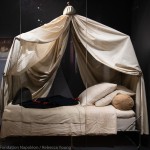 Object / St HelenaThe camp-bed in which Napoleon died
Object / St HelenaThe camp-bed in which Napoleon diedNapoleon took two of his favourite campbeds (created by Marie-Jean Desouches) with him into exile on St Helena. This one (known as the “lit Murat”, and given to the Musée de l’Armée in 1973) is that in which he died, at 5.49pm on 5 May 1821, in the drawing room* of Longwood House. The other St Helena campbed (now […]
-
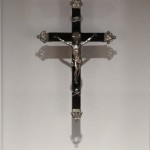 Object / St HelenaCrucifix which was placed on Napoleon’s body during his lying-in-stateThis cross was the one which was placed on Napoleon’s body, as depicted in many of the drawings made at the scene the day after his death and also in later imagined representations such as that by Mauzaisse (1843) showing the Emperor’s corpse dressed in his…
Object / St HelenaCrucifix which was placed on Napoleon’s body during his lying-in-stateThis cross was the one which was placed on Napoleon’s body, as depicted in many of the drawings made at the scene the day after his death and also in later imagined representations such as that by Mauzaisse (1843) showing the Emperor’s corpse dressed in his… -
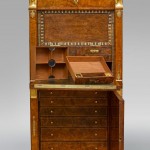 Object / Directoire-Consulat-Ier Empire/Directory-Consulate-1st EmpireA fall-front ‘secrétaire’ (writing desk)Although Biennais is today associated with gold and silverware, he began his career as a “tabletier” [maker of small objects] in Paris in 1788 (Arch. nat. Y. 9334). A tabletier’s shop was where you could buy any of a thousand small objects, useful or not,…
Object / Directoire-Consulat-Ier Empire/Directory-Consulate-1st EmpireA fall-front ‘secrétaire’ (writing desk)Although Biennais is today associated with gold and silverware, he began his career as a “tabletier” [maker of small objects] in Paris in 1788 (Arch. nat. Y. 9334). A tabletier’s shop was where you could buy any of a thousand small objects, useful or not,… -
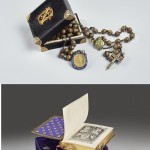 Object / 2nd Republic / 2nd Empire, IIe République – 2nd Empire/2nd Republic-2nd EmpireRosary and Prayer-book belonging to Empress Eugenie
Object / 2nd Republic / 2nd Empire, IIe République – 2nd Empire/2nd Republic-2nd EmpireRosary and Prayer-book belonging to Empress EugenieOf all the existing images of the Empress Eugenie, the photographs of her in prayer are the most iconic. This photographic portrait taken by Gustave le Gray in the summer of 1856 for the painter Thomas Couture, was widely disseminated after it was taken. This wasn’t the first time the Empress was captured in prayer; the […]
-
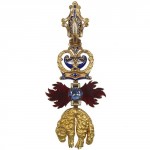 Object / 2nd Republic / 2nd EmpireThe ‘Order of the Golden Fleece’ medal awarded to the Prince Imperial
Object / 2nd Republic / 2nd EmpireThe ‘Order of the Golden Fleece’ medal awarded to the Prince ImperialNapoleon Eugène Louis Jean Joseph Bonaparte (1856-1879), Prince Imperial, was the recipient of a number of orders and decorations during his life, although these distinctions are often overshadowed by the large and impressive collection belonging to his father, the Emperor Napoleon III. Napoleon III’s collection is the only complete set of decorations belonging to a […]
-
 ObjectFigeac Monument dedicated to those who died in the War of 1870: ‘The Heroic death of Captain Pierre-Auguste Anglade’
ObjectFigeac Monument dedicated to those who died in the War of 1870: ‘The Heroic death of Captain Pierre-Auguste Anglade’This war memorial is dedicated to those who died in the War of 1870 [the Franco-Prussian War]. It was erected and revealed to the public on 7 July 1907, at a site donated by the commune of Figeac. The memorial was financed by a subsidy from the Lot département as well as a fundraising campaign initiated by the Société […]

